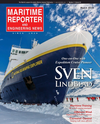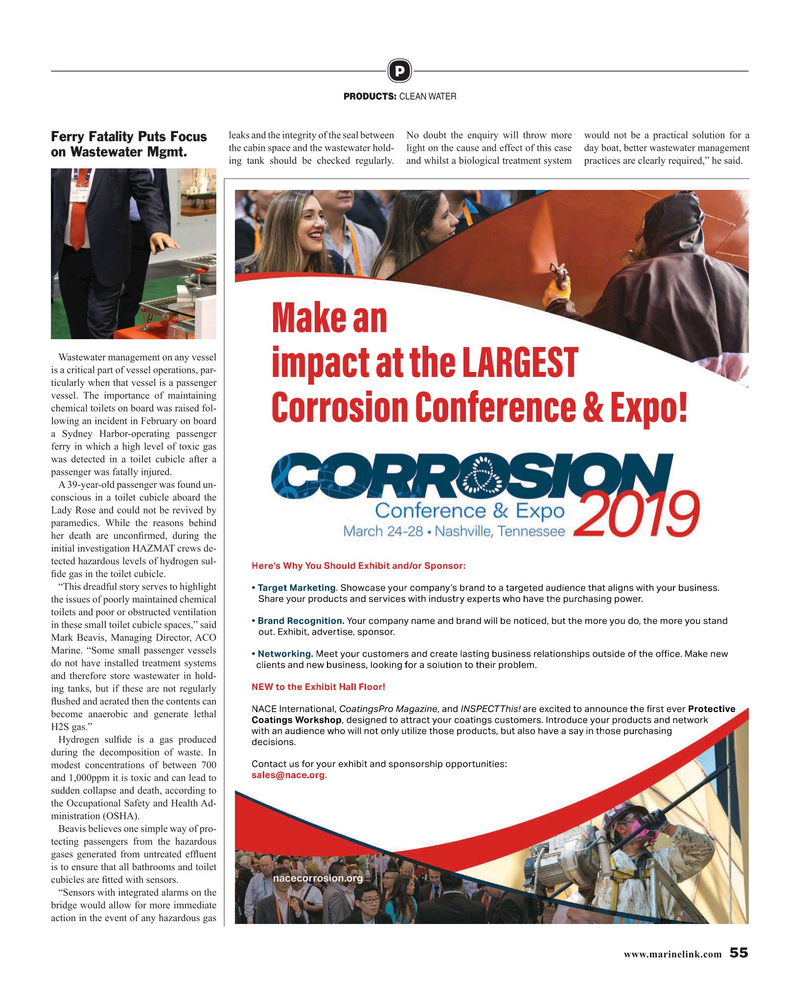
Page 55: of Maritime Reporter Magazine (March 2019)
Cruise Shipping
Read this page in Pdf, Flash or Html5 edition of March 2019 Maritime Reporter Magazine
P
PRODUCTS: CLEAN WATER leaks and the integrity of the seal between No doubt the enquiry will throw more would not be a practical solution for a
Ferry Fatality Puts Focus the cabin space and the wastewater hold- light on the cause and effect of this case day boat, better wastewater management on Wastewater Mgmt.
ing tank should be checked regularly. and whilst a biological treatment system practices are clearly required,” he said.
Wastewater management on any vessel is a critical part of vessel operations, par- ticularly when that vessel is a passenger vessel. The importance of maintaining chemical toilets on board was raised fol- lowing an incident in February on board a Sydney Harbor-operating passenger ferry in which a high level of toxic gas was detected in a toilet cubicle after a passenger was fatally injured.
A 39-year-old passenger was found un- conscious in a toilet cubicle aboard the
Lady Rose and could not be revived by paramedics. While the reasons behind her death are uncon? rmed, during the initial investigation HAZMAT crews de- tected hazardous levels of hydrogen sul- ? de gas in the toilet cubicle.
“This dreadful story serves to highlight the issues of poorly maintained chemical toilets and poor or obstructed ventilation in these small toilet cubicle spaces,” said
Mark Beavis, Managing Director, ACO
Marine. “Some small passenger vessels do not have installed treatment systems and therefore store wastewater in hold- ing tanks, but if these are not regularly ? ushed and aerated then the contents can become anaerobic and generate lethal
H2S gas.”
Hydrogen sul? de is a gas produced during the decomposition of waste. In modest concentrations of between 700 and 1,000ppm it is toxic and can lead to sudden collapse and death, according to the Occupational Safety and Health Ad- ministration (OSHA).
Beavis believes one simple way of pro- tecting passengers from the hazardous gases generated from untreated ef? uent is to ensure that all bathrooms and toilet cubicles are ? tted with sensors.
“Sensors with integrated alarms on the bridge would allow for more immediate action in the event of any hazardous gas www.marinelink.com 55
MR #3 (50-57).indd 55 3/8/2019 11:35:49 AM

 54
54

 56
56
